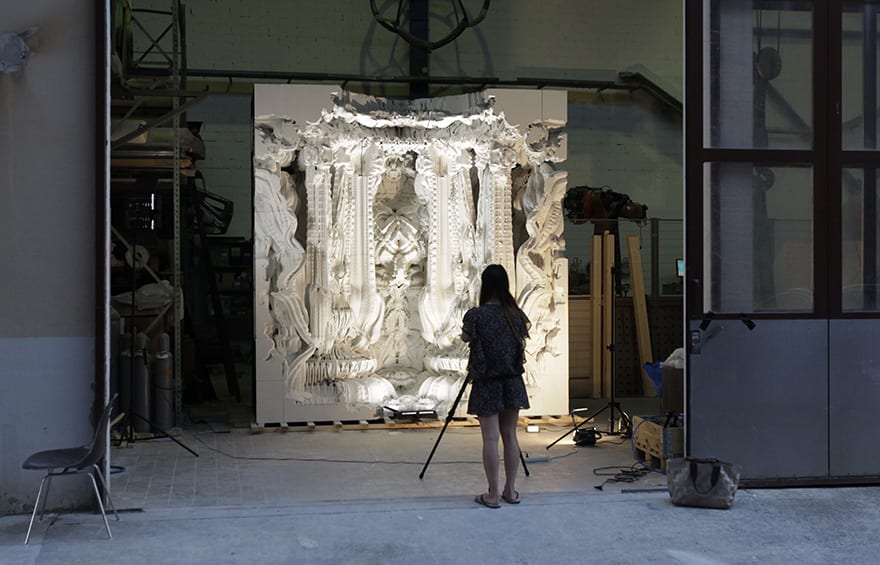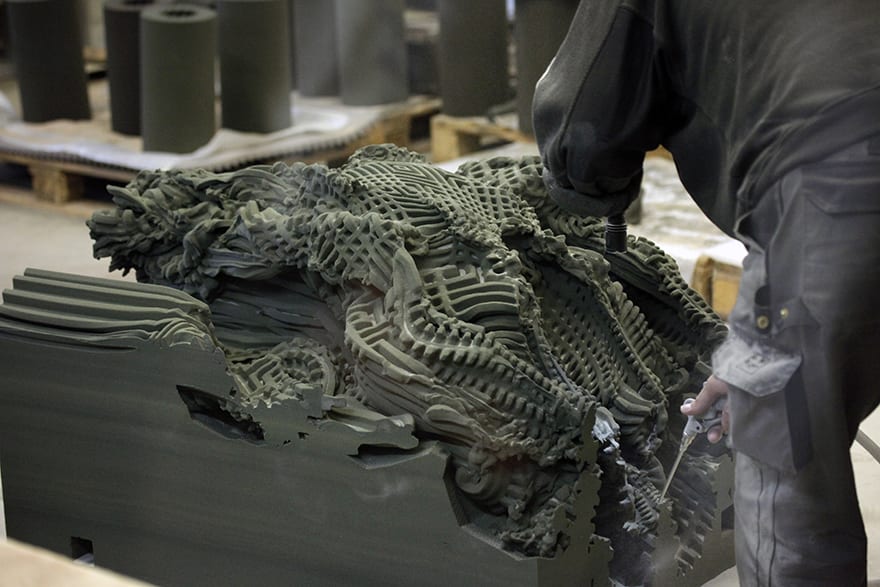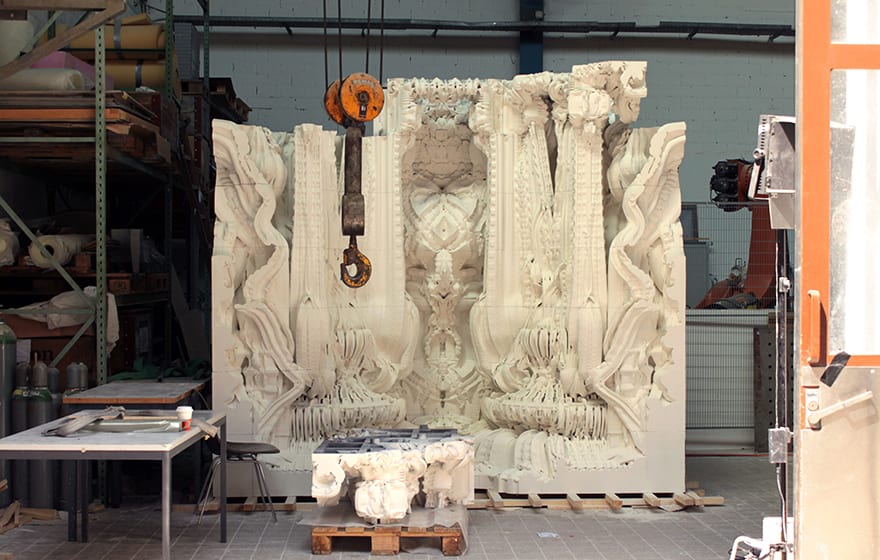Technology used to build what’s being described as the world’s first 3D printed room, a highly ornate Baroque-inspired structure made of faux-sandstone printed blocks, could be used on restoration projects imminently, says the project’s lead designer, Michael Hansmeyer.
The Digital Grotesque project, developed by architect Hansmeyer and his colleague Benjamin Dillenburger, is a design for an imaginary grotto commissioned by the FRAC Centre for contemporary arts in Orléans, France.
The room features highly detailed Baroque-style forms, generated using a software algorithm able to achieve a resolution of 260 million surfaces, much more ornate than the level of detail possible using traditional techniques, the designers claim.
The structure was 3D printed in sections using a combination of sand and a binding agent, over the course of a month, then assembled in one day.

Hansmeyer tells BIM+: “The technology could be used for restoration work. The sandstone printed components work structurally and have a similar compressive strength to real sandstone. If a historic building has a broken stone or component, it might be possible to scan the component then simply reprint it.”
The design for Digital Grotesque was printed in sections sized to be suitable for handling by the museum’s small crane, with join lines visible where the components connect.
However, the 3D printer used is also capable of printing massive 4m x 2m x 1m pieces, each weighing approximate 12 tonnes, making it possible to print entire rooms with no join lines at all, says Hansmeyer.
“On this project we could have polished the joins away, but we decided we wanted them on show to provide a hint of the fabrication method,” he adds.
The project highlights the potential 3D printing has to free architectural design from the constraints of existing manufacturing processes and craft-based production methods.

The result is reminiscent of sets designed by H R Giger for the films Alien and Aliens
It could move architecture towards a pre-modern condition of bespoke and highly individualised designs, says Hansmeyer: “When 3D printing in sand, it costs exactly the same to print the most elaborate form imaginable as it does to print a plain box. And it costs the same to print 100 completely individual forms as it does to print the same form 100 times. For the first time, there is no cost for complexity, no cost for ornament, and any kind of form can be produced.”
The software algorithms were developed to produce forms that combine the man-made and the natural, appearing simultaneously strange and familiar.
The result is reminiscent of the disturbing sets designed by H R Giger for the films Alien and Aliens, or of organic forms seen in renaissance and baroque art and architecture.
“One can distinguish these forms from chaos, and one can detect an order, yet it is difficult to deduce what the system of order is or how it was designed or created,” says Hansmeyer. “In designing the grotto, we aimed to create sense of wonder. We wanted to draw people into the room, to make them curious, to disorientate them and make them want to discover it,” he concludes.

The 3D printer used can print massive 4m x 2m x 1m pieces
The technology could be used for restoration work. The sandstone printed components work structurally and have a similar compressive strength to real sandstone. If a historic building has a broken stone or component, it might be possible to scan the component then simply reprint it.– Michael Hansmeyer











